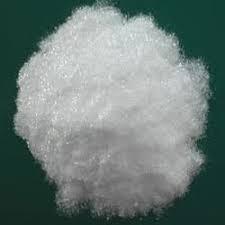قیمت سدیم استات

سدیم استات چیست ؟
دی سدیم استات یک نمک است که دارای بسیاری از کاربرد های عملی است به این معنی که آن را تنها در صورت حل شدن در آب یونیزه می کند در واقع این نمک بی رنگ کاربرد های بسیار زیادی در صنایع غذایی دارد و از لحاظ فیزیکی یک پودر کریستالی است که جذب کننده ی آب است.
کاربرد های سدیم استات
از جمله استفاده های آن می توان به استفاده در صنعت نساجی برای خنثی سازی ضایعات اسید سولفوریک اشاره کرد و همچنین در تولید لباس های پنبه ای و لاستیک های مصنوعی اشاره کرد ،از این نمک نیز در بتن ها برای جلوگیری از آسیب دیدن بتن ها در برابر آب نیز استفاده میکنند و نوع خوراکی آن در صنایع غذایی برای طعم دهی در غذاها نیز استفاده می شود.
قیمت فروش استات سدیم
شرکت تیناکم آمادگی دارد ضمن دریافت سفارشهای مشتریان عزیز ، مواد مورد نیاز صنایع مختلف را بهترین قیمت و بهترین کیفیت تأمین کند و در سریعترین زمان ممکن بهوسیله سیستم حملونقل مطمئن به شهرهای مختلف ارسال نماید. قیمتهای عرضه شده توسط این شرکت همیشه پائین ترین قیمت است و میتوانید ضمن استعلام قیمت، با قیمت ما سایر اشخاص حقیقی و حقوق دیگر مقایسه نمائید.


دیدگاه ها
سدیم استات چیست؟
به چه صورت میتونم استات سدیم
کاربردهای سدیم استات چیه؟
سدیم استات برای طعم دهندگی
مشخصات ظاهری استات سدیم چیست؟
سدیم استات چه قیمت هست؟
فروشنده سدیم استات
قیمت فروش استات سدیم
Sodium is a chemical element
دلدار
Sodium is a chemical element
سدیم استات | بازرگانی تیناکِم
Sodium is a chemical element
سدیم استات | بازرگانی تیناکِم
Sodium is a chemical element
سدیم استات | بازرگانی تیناکِم
سدیم استات | بازرگانی تیناکِم
اضافه کردن دیدگاه جدید